Cover photo by Brigitte Tohm from Pexels (stock photo)
Iwate winters are absolutely breathtaking with landscapes completely transforming such as the spectacular Geibikei Gorge, the ‘snow monsters’ that form in Hachimantai and perhaps you’d like to see some of our magical winter festivals (for more info check out this previous article: A Winter Wonderland in Iwate )
Coming from Australia, a country with a mild winter – no snow and temperatures hardly ever dipping below 15℃ in the daytime, I didn’t have much of an idea of what a real winter was like. I’d say I get cold very easily, but what gets me more is having to carry a heavy coat around when I don’t need one. I’m sure that many of you are accustomed to cold winters, but keep reading – this may help you to not pack too many items.
Here are my general ideas and some information specific to Iwate and Japanese winters.
Iwate’s average temperatures
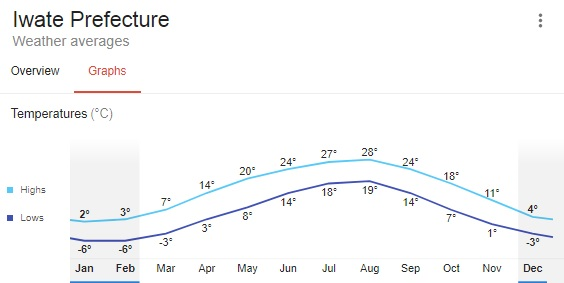
Indoors
Even though Iwate can get quite cold, there are houses with insulation equipped to stave off the cold. Keeping in mind that cardigans will make you feel warmer by 2.2℃, socks by 0.6℃, here are some suggestions to help you bear the cold in your home.
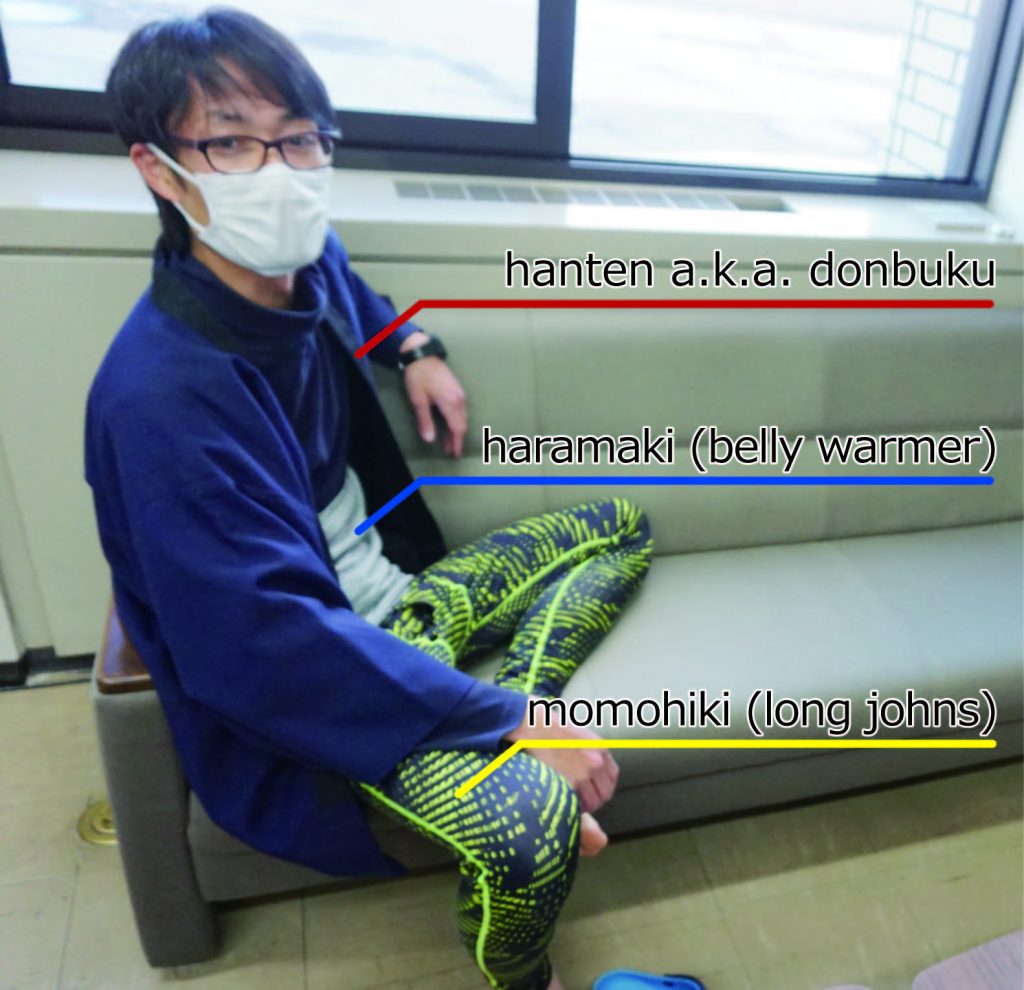
– Fleece clothing
– Slippers, UGG boots, socks
– Hanten (半纏): traditional Japanese short winter coat (they make cool souvenirs)
– Momohiki (冬の股引): long johns
– Haramaki (腹巻): Fabric belly warmers
Outdoors
It gets snowy and icy in most parts of Iwate (not so much in the southern coastal areas). In a few areas, the first snow falls in mid-November, and for most areas, December. Do invest in some water proof, non-slip snow boots. I often see people using an umbrella when the snows are heavy.
General outdoor wear:
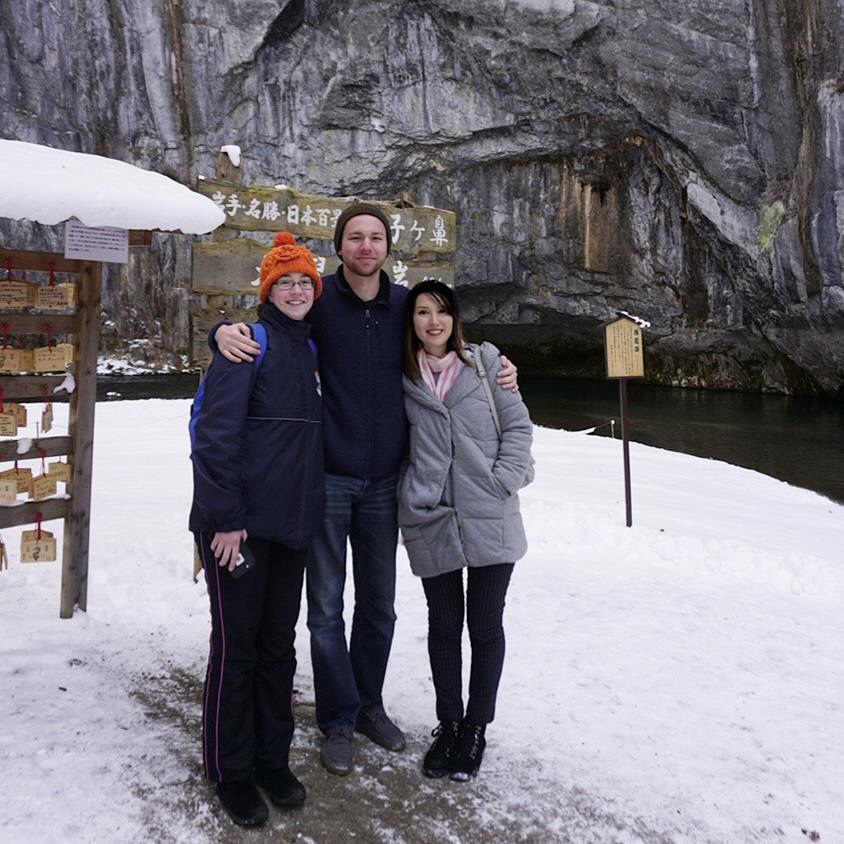
Gloves, a scarf, leggings, pants/jeans, long socks (2 layers – as an Aussie, layering socks never crossed my mind), heat-tech shirt, turtle neck sweater, a beanie (preferably on that covers the ears – or get some ear muffs), a large coat (preferably light, many opt for down jackets) – I generally go for three layers and a coat/jacket.
Some popular items for Japanese winters
-Down jackets (ダウンジャケット): In colder areas of Japan, I often see people wearing these jackets (some people use this as a layer under their coats). As they are filled with duck or geese feathers, they are incredibly light, compressible and have excellent heat retention.
-Heattech (ヒートテック): is a popular product developed by Japanese clothing brand, UNIQLO. Heattech items are heat generating, lightweight, stretchy, comfortable and used commonly for layering up. Some other useful qualities include that they’re quick-drying, anti-static and control odors (not to mention affordable!). Check out the range of clothing items that utilize Heattech technology such as jeans, Chino pants, tights, neck-warmers, bras, socks and long sleeved tops.
-Hokkairo (ホッカイロ): cheap, disposable, portable heat packs that warm up when exposed to oxygen. There are a few different types such as ones you slip into your coat pocket and it works to keep your hand warm, or smaller ones that fit in your shoes, or adhesive types where you can stick them on your undershirt (do not stick them directly on your skin). They can heat up from 50 to 70 degrees Celsius and stay warm for hours.
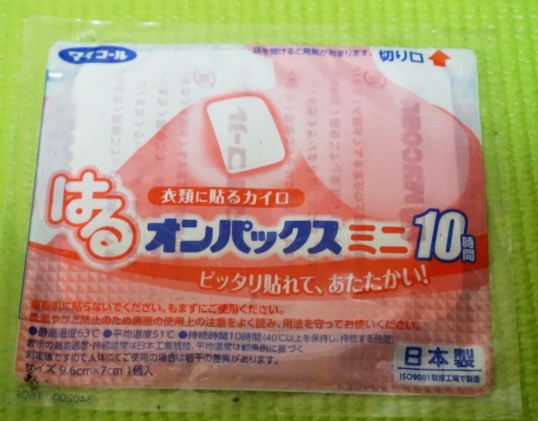
Hokkairo
– Masks (マスク): commonly used for the prevention and spreading of illnesses, these also double as a face-warmer.
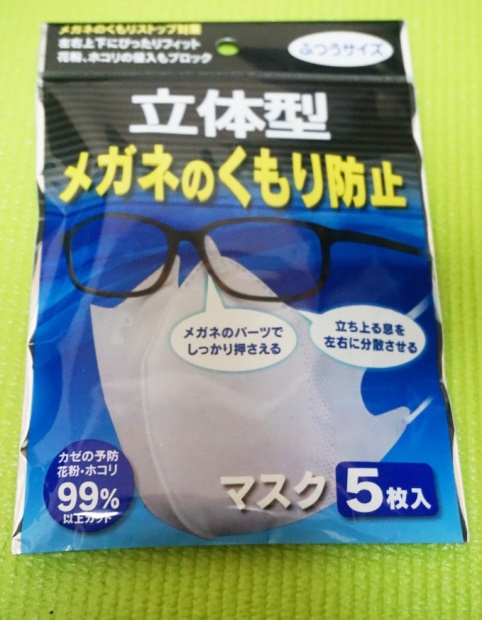
Masks
GENERAL Etiquette
- People don’t usually wear scarves (unless for fashion), coats and thick jackets indoors (work, public places)
- If you catch a cold or have a cough, wear a mask (they keep your face warm too)
- This is a year-round rule but don’t wear revealing tops, also I always get comments if my belly or back shows (even if it’s by accident), be careful of bra straps showing.
- Women usually wear black stockings opposed to nude stockings in winter
If you are like me and come from a warm country with few options to shop, Japan has some excellent, affordable options. You can purchase clothes at Uniqlo or even the local home depots and even pharmacies. They stock what you will need for the local winter. In the end, everyone is different and for me it took a lot of trial and error!
Japanese
岩手の冬の服装岩手は冬になると景色が完全に変わります。 雪に覆われた豪華な猊鼻渓、八幡平の樹氷など、幻想的な冬の祭りを見ることができます。 母国(オーストラリア)の冬は気温があまり下がらない所でしたので、本当の冬を経験したことがありませんでした。 私はかなり寒がりですが、必要無いときに重いコートを持ち歩くのは面倒です。 地元の情報を入れながら書きましたので、寒い冬をあまり経験したことない方や、冬をよく経験している方にも是非読んでいただきたいです。
<住宅>
岩手は外の気温が低い分、高断熱の素材が使われている住宅もあり、それほど外のような寒さを感じずに過ごすこともできます。
<服装について>
カーディガンは気温を2.2℃、靴下は0.6℃上昇させます。 フリースの衣類、スリッパ、UGGブーツ、靴下、半纏、股引き、はらまきなどが お奨めです。
<屋外>
岩手のほとんどの地域で雪が降ります。初雪は11月中旬から12月に降り始めます。 そのために防水のスノーブーツの購入をお勧めします。 激しい雪が降ると、傘をさす人もいます。
<一般的なアウトドアウェア>
手袋、スカーフ、レギンス、ズボン/ジーンズ、長い靴下(二枚重ねをする人もいます。 オーストラリア人として、靴下を重ねて履くことなど考えたこともありませんでした)、防寒の下着(例えばヒートテック)、タートルネック・セーター、ニット帽子(耳を覆う)、厚いコート(ダウンジャケットなど) - 私は個人的に三枚重ね着をして上にコート/ジャケットを着ます。
<日本の冬の人気アイテム>
-ダウンジャケット:日本の寒い地域では、このタイプのジャケットを 着用する方が多いです(コートの下にレイヤーとして使用する人もいます)。 アヒルやガチョウの羽毛が使われているので 軽く、圧縮性があり、優れた保温性を持っています。
-Heattech:日本の衣料品ブランドであるユニクロが開発した人気商品です。 ヒートテックのアイテムには発熱性、軽量性、伸縮性があり、快適で、かつ乾燥しやすく 静電気が少ないため、重ね着用に利用する人が多いようです。 (料金もお手頃です!)。 ジーンズ、チノパンツ、タイツ、ネックウォーマー、ブラ、ソックス、長袖トップスなどヒート・テック技術を使用した多くの服があります。
-ホッカイロ:安く、使い捨てで、空気に触れた時に 発熱するポータブルヒートパックです。 ポケットの中に入れたり、靴に中にフィットするもの、または アンダーシャツに貼り付けるタイプ(皮膚に直接貼らないでください)があります。 摂氏50から70度まで熱くなり、何時間も暖かみを感じます。
- マスク:風邪予防だけではなく、顔を冷やさない効果もあります。
<マナー>
・スカーフ(ファッションでない限り)、コート、厚手のジャケットは 屋内(仕事場、公共の場)では脱ぎます。
・ 風邪をひいている時や咳が出る場合は、マスクを着用してください。
・開きすぎるトップスを着ることは、なるべく避けた方が良いでしょう。
また、腹や背中が見えてしまうと(偶然であっても)注意されるかもしれません。 女性は下着の肩紐が見えないように気をつけた方が良いと思います。
・ 女性は通常スキンカラーのストッキングを履きますが、冬には 黒のタイツを着用する人も多いです。
暖かい国から来た方で、冬物の買い物をするオプションが少ない場合でも 日本には優れた手頃なお店がたくさんあるので心配いりません。 ユニクロまたは地元のブティックや薬局でも衣服を購入できます。 地元の冬に必要なものがそろっています。



